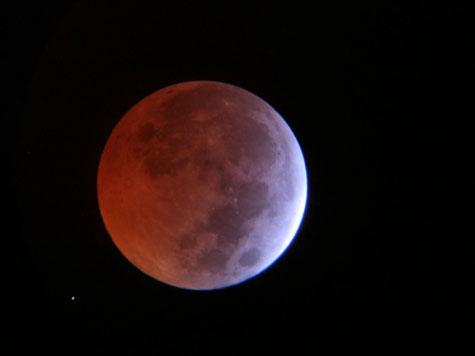Throughout human history, total lunar eclipses have inspired a range of emotions, and seeing such events are an amazing experience. Four total eclipses are coming up in the next 17 months, and while you can view those displays from many kinds of sites, enjoying the phenomenon in a dramatic natural setting like a National Park Service site would be a bonus for many of us.
The first of the four events, a total lunar eclipse, will be visible across North America, and depending upon your location, will occur late on the night of April 14 or during the early morning hours on April 15.
According to information from NASA," the April 15th eclipse begins at 2 a.m. Eastern time when the edge of the Moon first enters the amber core of Earth’s shadow. Totality occurs during a 78- minute interval beginning around 3 o’clock in the morning on the east coast, midnight on the west coast. Weather permitting, the red Moon will be easy to see across the entirety of North America."
That viewing opportunity ushers in a lunar eclipse tetrad—a series of four consecutive total eclipses occurring at approximately six-month intervals. The total eclipse of April 15, 2014, will be followed by another on Oct. 8, 2014, yet another on April 4, 2015, and the final in the set on Sept. 28, 2015.
"The most unique thing about the 2014-2015 tetrad is that all of them are visible for all or parts of the USA," says longtime NASA eclipse expert Fred Espenak.
"During the 21st century, there are 9 sets of tetrads, so I would describe tetrads as a frequent occurrence in the current pattern of lunar eclipses," says Espenak. "But this has not always been the case. During the three hundred year interval from 1600 to 1900, for instance, there were no tetrads at all."
Several National Park Service areas are offering special programs to help visitors enjoy the April 14/15 eclipse.
One such location is Great Basin National Park, home of "one of the last true dark skies in America." The park has an active night sky program throughout the year, and on the night of April 14, rangers there "will have their multiple high-powered telescopes trained on the Moon during the eclipse phases." The free event, at the Lehman Caves Visitor Center, will begin at 10:00 p.m. at the penumbral eclipse and run through the total eclipse. Click here for more information.
Similar activities are scheduled from 1:30 a.m. to 5:30 a.m. on April 15 at Sleeping Bear Dunes National Lakeshore. That park hosts special night sky programs April through October, and the upcoming lunar eclipse offers a great kickoff to this year's schedule. You'll find the details you need to participate here.
If you're considering viewing the eclipse from a park or any other public place, it would be a good idea to confirm in advance that the area is open in the hours after midnight. Some smaller parks, especially historical sites and those in urban areas, are closed late at night to help prevent vandalism and similar problems.
NASA experts say the moon appears to be red during a total eclipse, but why is that the case? Here's their explanation.
"A quick trip to the Moon provides the answer: Imagine yourself standing on a dusty lunar plain looking up at the sky. Overhead hangs Earth, nightside down, completely hiding the sun behind it. The eclipse is underway."
"You might expect Earth seen in this way to be utterly dark, but it's not. The rim of the planet is on fire! As you scan your eye around Earth's circumference, you're seeing every sunrise and every sunset in the world, all of them, all at once. This incredible light beams into the heart of Earth's shadow, filling it with a coppery glow and transforming the Moon into a great red orb."
Whether you view the upcoming total eclipse from somewhere near your home or a special location like a park, if the weather cooperates, it will be quite a site. More information about the lunar eclipses can be found on NASA's eclipse home page.


 Support Essential Coverage of Essential Places
Support Essential Coverage of Essential Places







Comments
Hovenweep, Natural Bridges, Colorado National Monument, would all be good places for viewing, too. COLO and NABR have active night sky programs.